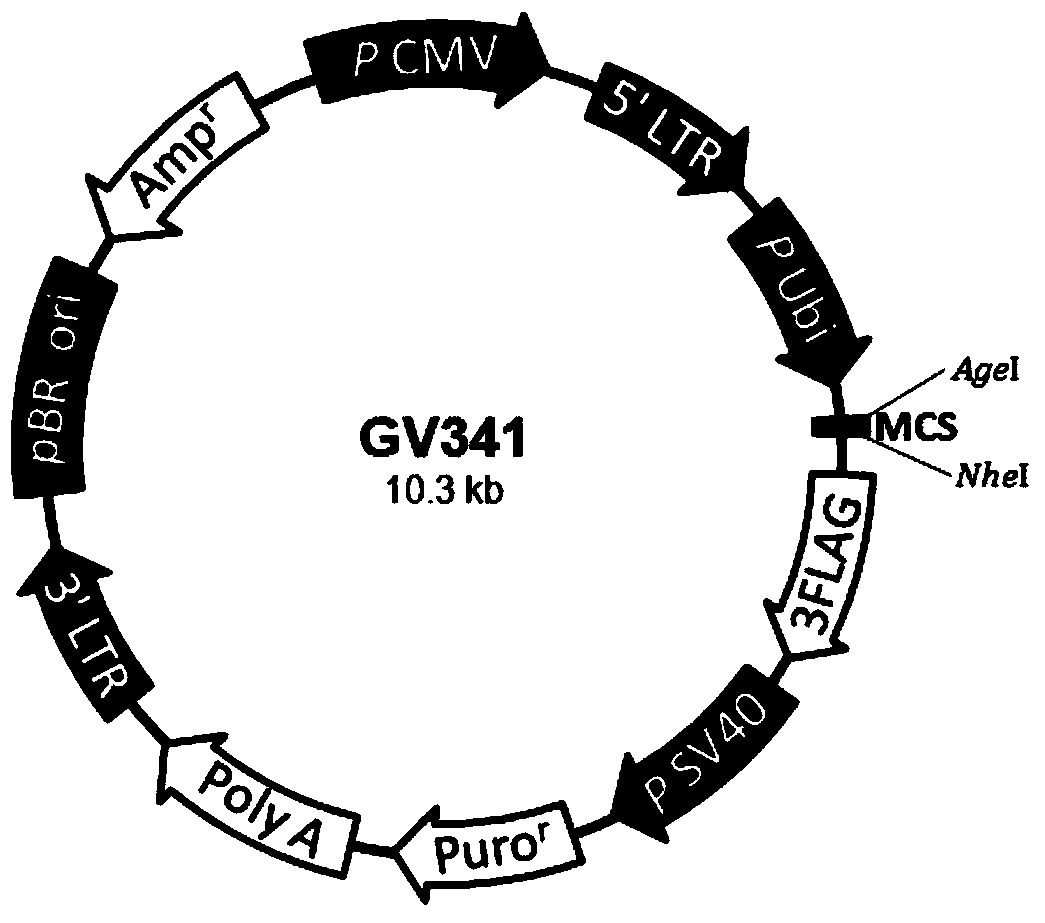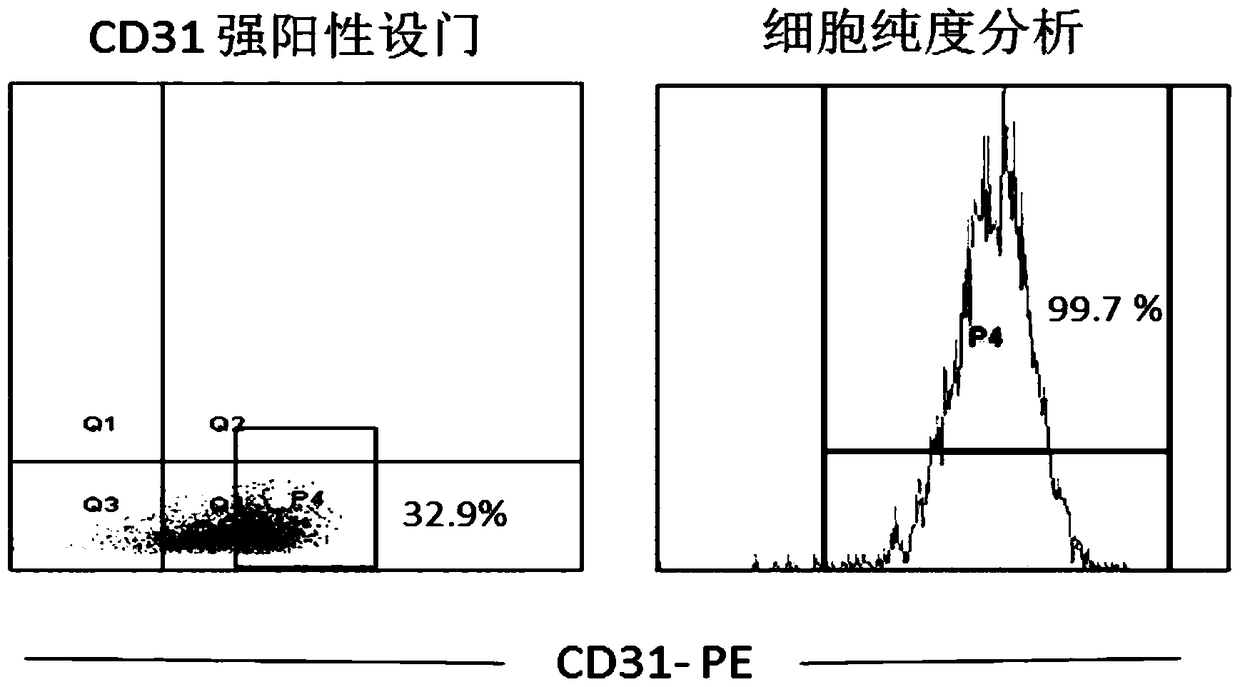An immortalized human liver cancer vascular endothelial cell line and its preparation method and application
A vascular endothelium and immortalization technology, applied in the biological field
- Summary
- Abstract
- Description
- Claims
- Application Information
AI Technical Summary
Problems solved by technology
Method used
Image
Examples
Embodiment 1
[0063] Example 1: Establishment and passage of human liver cancer vascular endothelial cell line ECDHCC-1
[0064] 1. Separation and extraction of human liver cancer (moderately differentiated) tissue vascular endothelial cells and primary culture:
[0065] 1.1. After informed consent and medical ethics approval, take fresh specimens of human liver cancer (moderately differentiated) surgical resection, and prepare single-cell suspension: wash the tissue fluid, red blood cells and ice-based basal medium, and cut the tissue into 1-2mm 3 The fragments were transferred into 10 mL of 0.5% collagenase type I and type IV mixed with Hank's solution, incubated at 37°C for 25 min, 10% BSA / PBS was used to stop the digestion, and the cell suspension was aspirated repeatedly with needles and syringes of different specifications, through 70 μm, 40 μm Filter the cell suspension, centrifuge at 1000r / min at 4°C for 10min, discard the supernatant and then make a single cell suspension, and add ...
Embodiment 2
[0082] Example 2: Identification of biological characteristics of human liver cancer vascular endothelial cell line ECDHCC-1
[0083] 1. The ultrastructure of W-P bodies in the cytoplasm of ECDHCC-1 was observed by transmission electron microscopy (see Figure 4 Arrow), which is one of the morphological characteristics of vascular endothelial cells. The 64-generation ECDHCC-1 cells were collected, and the electron microscope examination sections were made according to the conventional transmission electron microscope method, and the electron microscope was magnified 10,000 times to take pictures.
[0084] 2. Laser confocal microscopy to detect the expression of CD31 and CD105, etc.: Prepare cultured cell slides in a six-well plate, fix with 4% paraformaldehyde for 15min, wash with PBS for 3x5min, 0.3% Triton X-100 / PBS for 10min, wash with PBS for 1x5min, wash with Mark the edge with nail polish to prevent leakage of blocking solution or antibody, drop 100 μL of 10% BSA / PBS on...
Embodiment 3
[0101] Example 3: Application experiment of immortalized human liver cancer vascular endothelial cell line ECDHCC-1
[0102] Apply the cell line ECDHCC-1 provided by the present invention to basic research: vascular regulation-related molecules Dicer (GENBANK NW-177438), miRNA-210 (Accession: MIMAT0000267), FGFRL-1 (GENBANK NW-021923) on ECDHCC-1 functional impact.
[0103] Use lentiviral vectors to carry these target genes or silence these genes to transfect ECDHCC-1 cells, verify their effective transfection, and detect changes in cell function. Experimental method: see Xiao F, Qiu H, Zhou L, Shen X, Yang L, and Ding K. WSS25 inhibits Dicer, downregulating microRNA-210 which targets Ephrin-A3, to suppress human micro-vascular endothelial cell (HMEC-1) tube formation. Glycobiology , 2013; 23 (5): 524-535, will carry Dicer gene virus, miRNA-210 gene virus, silence (sh) FGFRL-1 gene virus (all viruses are purchased from Shanghai Jikai Biological Co., Ltd.) into the present inv...
PUM
 Login to View More
Login to View More Abstract
Description
Claims
Application Information
 Login to View More
Login to View More - R&D
- Intellectual Property
- Life Sciences
- Materials
- Tech Scout
- Unparalleled Data Quality
- Higher Quality Content
- 60% Fewer Hallucinations
Browse by: Latest US Patents, China's latest patents, Technical Efficacy Thesaurus, Application Domain, Technology Topic, Popular Technical Reports.
© 2025 PatSnap. All rights reserved.Legal|Privacy policy|Modern Slavery Act Transparency Statement|Sitemap|About US| Contact US: help@patsnap.com



